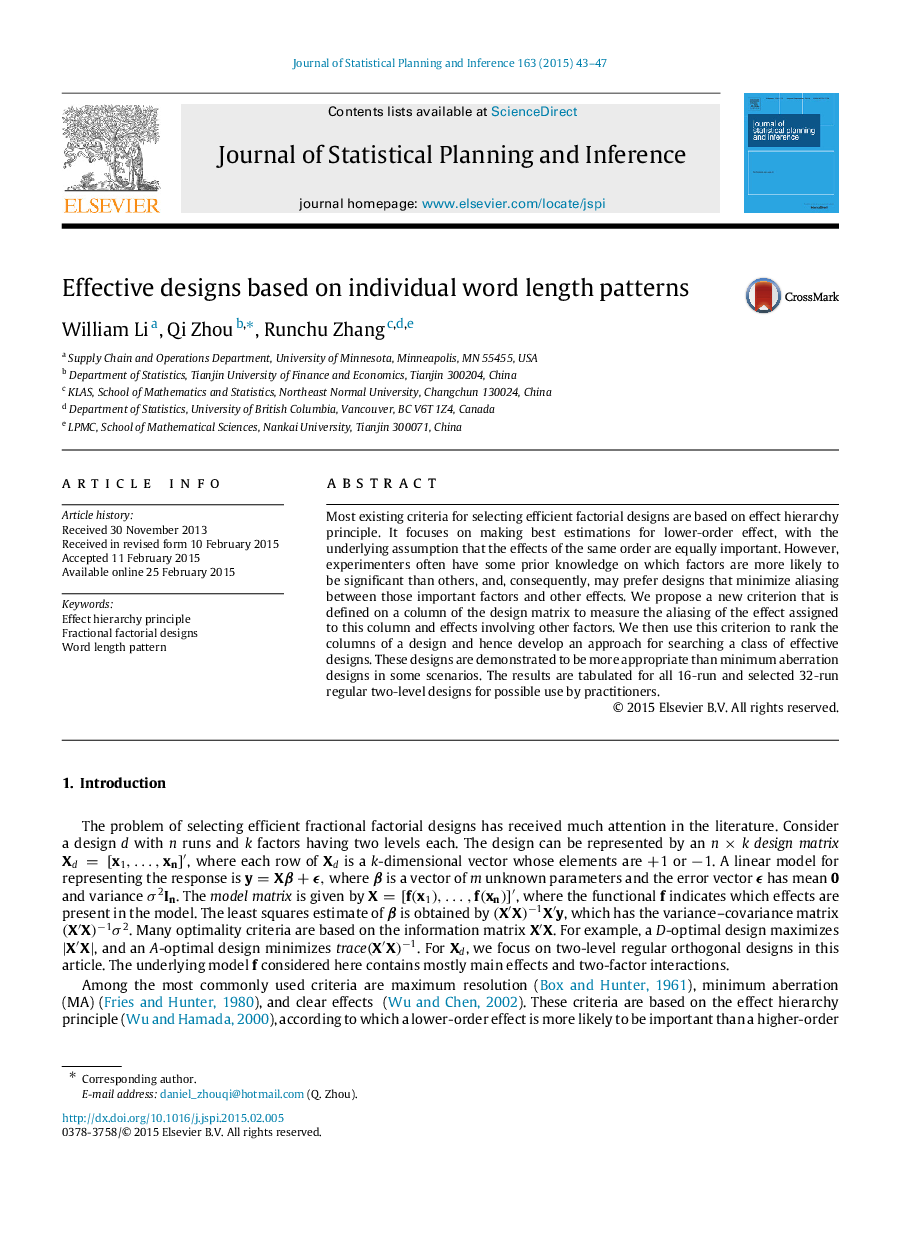| Article ID | Journal | Published Year | Pages | File Type |
|---|---|---|---|---|
| 1147641 | Journal of Statistical Planning and Inference | 2015 | 5 Pages |
•We proposed a new criterion called individual word length pattern.•We used the criterion to rank columns of 16-run and 32-run orthogonal designs.•We proposed a class of optimal designs based on the assumption that one or two factors are of particular importance.
Most existing criteria for selecting efficient factorial designs are based on effect hierarchy principle. It focuses on making best estimations for lower-order effect, with the underlying assumption that the effects of the same order are equally important. However, experimenters often have some prior knowledge on which factors are more likely to be significant than others, and, consequently, may prefer designs that minimize aliasing between those important factors and other effects. We propose a new criterion that is defined on a column of the design matrix to measure the aliasing of the effect assigned to this column and effects involving other factors. We then use this criterion to rank the columns of a design and hence develop an approach for searching a class of effective designs. These designs are demonstrated to be more appropriate than minimum aberration designs in some scenarios. The results are tabulated for all 16-run and selected 32-run regular two-level designs for possible use by practitioners.
